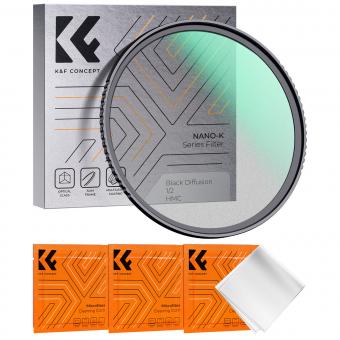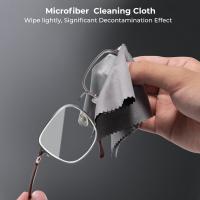Are There Microscopic Bugs In Bananas?
Yes, bananas can harbor microscopic bugs such as fruit flies and other small insects. These bugs are attracted to the sweet smell of ripe fruit and may be present on the surface of the banana. However, proper washing and peeling of the banana can help remove any potential bugs before consumption.
1、 Fruit Fly Infestation
There are microscopic bugs in bananas, specifically fruit flies. These tiny insects are attracted to ripe or overripe fruits, including bananas, and can lay their eggs on the surface of the fruit. As the eggs hatch, the larvae feed on the fruit, causing it to spoil and become unsuitable for consumption.
Fruit fly infestation is a common issue with bananas and other fruits, especially when they are not stored properly. To prevent fruit fly infestation, it is important to store bananas in a cool, dry place and to consume them before they become overly ripe.
In terms of the latest point of view, there has been ongoing research and discussion about the presence of microscopic bugs in bananas and other fruits. Some experts argue that the presence of fruit flies and other microscopic bugs is a natural part of the fruit's ecosystem and does not necessarily pose a health risk to consumers. However, others emphasize the importance of proper storage and hygiene practices to minimize the risk of consuming contaminated fruits.
Overall, while there may be microscopic bugs present in bananas, proper storage and handling can help mitigate the risk of fruit fly infestation and ensure the safety of the fruit for consumption.
2、 Banana Pest Control
Yes, there are microscopic bugs in bananas. One common pest that can infest bananas is the banana weevil, which is a type of beetle that can cause significant damage to banana crops. These weevils are small and can be difficult to detect, but their presence can lead to reduced fruit quality and yield.
In terms of pest control for bananas, there are several methods that can be used to manage infestations. These include the use of insecticides, biological control methods such as introducing natural predators of the pests, and cultural practices such as proper sanitation and crop rotation. Additionally, the use of pheromone traps and monitoring systems can help to detect and manage pest populations in banana plantations.
It's important to note that there is a growing interest in sustainable and environmentally friendly pest control methods, especially in the agricultural industry. As a result, there is increasing research and development into alternative pest control strategies that minimize the use of chemical pesticides and promote natural pest management.
Overall, the management of pests in banana crops is an ongoing challenge for farmers, but with the use of integrated pest management strategies and the development of sustainable pest control methods, it is possible to effectively control pest populations and protect banana crops from damage.
3、 Microscopic Organisms in Bananas
Yes, there are microscopic organisms in bananas. Bananas, like many fruits, can harbor a variety of microscopic organisms including bacteria, fungi, and even tiny insects. One common example is the fruit fly, which can lay its eggs on the surface of the banana, leading to the presence of microscopic larvae.
In addition to insects, bananas can also contain bacteria and fungi that are not visible to the naked eye. These microorganisms can be introduced during the growing, harvesting, and handling processes, and can potentially affect the quality and safety of the fruit.
It's important to note that the presence of these microscopic organisms is not necessarily a cause for concern. In fact, many of the microorganisms found in bananas are harmless and even contribute to the natural decomposition process of the fruit.
From a food safety perspective, it's crucial to properly wash and handle bananas to minimize the risk of consuming harmful microorganisms. Additionally, storing bananas at the appropriate temperature can help slow down the growth of any potentially harmful microorganisms.
Overall, while there are indeed microscopic bugs and organisms in bananas, the majority of them pose no threat to human health when the fruit is handled and consumed properly.
4、 Fruit Quality Standards
"Fruit Quality Standards" are a set of guidelines and criteria used to assess the quality of fruits, including bananas. These standards are established to ensure that consumers receive high-quality, safe, and nutritious fruits. They cover various aspects such as size, shape, color, texture, flavor, and nutritional content.
As for the question "are there microscopic bugs in bananas," the answer is yes. Bananas, like many other fruits, can harbor microscopic bugs such as fruit flies and mites. These bugs are often found on the surface of the fruit and can be difficult to detect with the naked eye. While the presence of these bugs may not necessarily pose a health risk to consumers, it is important for fruit producers and distributors to adhere to strict hygiene and sanitation practices to minimize the presence of these bugs on the fruit.
In terms of the latest point of view, there is a growing emphasis on sustainable and organic farming practices, which includes the use of natural methods to control pests and minimize the presence of bugs on fruits. This approach involves the use of biological control agents, such as predatory insects, to manage pest populations and reduce the need for chemical pesticides. Additionally, advancements in fruit processing and packaging technologies have also contributed to improving the overall quality and safety of fruits, including bananas.
Overall, fruit quality standards continue to evolve to meet the changing demands of consumers and the industry, with a focus on delivering safe, nutritious, and high-quality fruits to the market.


































